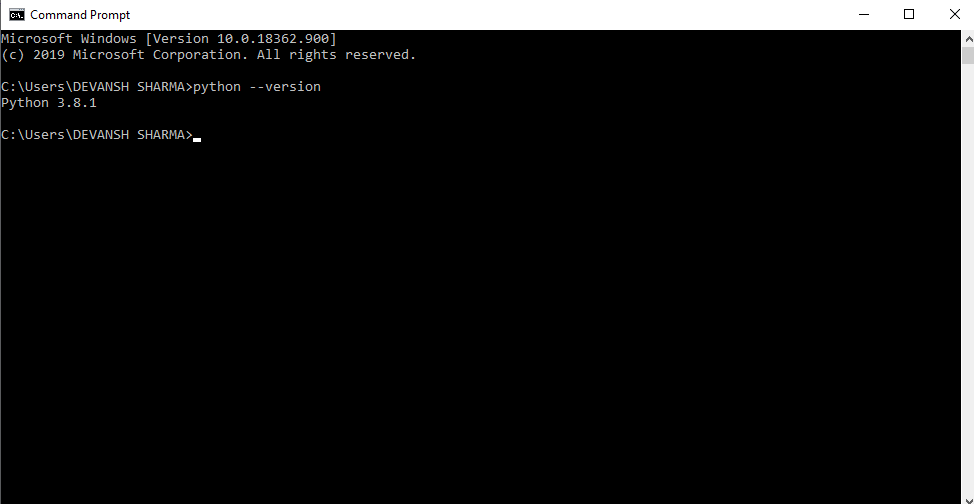
- #Running command from script it doesnt produce info how to#
- #Running command from script it doesnt produce info code#
- #Running command from script it doesnt produce info windows#
Following this useful information, you see the commands that were run, the output generated, and the final command Stop-Transcript, which ends the transcript and writes a final timestamp to the transcript file. You can see all of the common attributes you can expect from the transcript.Įach transcript created using default parameters will include host session information, start time, username, PowerShell and OS version, and machine name. Take a look at the PowerShell transcript file which was saved in using default parameters. Anatomy of a PowerShell TranscriptĮvery transcript has a certain “schema” or way it is structured. This naming convention becomes useful when transcripts are centrally stored as it prevents accidental overwrite and makes searching PowerShell logs easier. The Get-Date cmdlet and the output were recorded in the background to a plain-text file, including the Stop-Transcript cmdlet.īy default, transcripts are saved in the %userprofile%\Documents folder and are named PowerShell_transcript.txt. You can also “stop” a transcript by simply closing the PowerShell console. Using the Stop-Transcript cmdlet shows intent. To end the transcript, close the host session or use the Stop-Transcript cmdlet.
#Running command from script it doesnt produce info code#
To start a transcript or log of commands used during a host session, type the following code into the terminal and press Enter:Īt this point, that command the output has been saved to the text file where you defined it in the registry. These two simple commands are the easiest way to begin and stop recording PowerShell console activity. The easiest way to get started with transcripts is to use just two cmdlets Start-Transcript and Stop-Transcript.

Set-ItemProperty $basePath -Name "OutputDirectory" -Value $OutputDirectory Set-ItemProperty $basePath -Name "EnableTranscripting" -Value "1" Set-ItemProperty $basePath -Name "EnableInvocationHeader" -Value "1" # These can be enabled (1) or disabled (0) by changing the value New-ItemProperty $basePath -Name "OutputDirectory" -PropertyType String New-ItemProperty $basePath -Name "EnableTranscripting" -PropertyType Dword New-ItemProperty $basePath -Name "EnableInvocationHeader" -PropertyType Dword $basePath = 'HKLM:\SOFTWARE\WOW6432Node\Policies\Microsoft\Windows\PowerShell\Transcription'
#Running command from script it doesnt produce info windows#
For example, on Windows Server 2016, the registry key is located at HKLM: \SOFTWARE\WOW6432Node\Policies\Microsoft\Windows\PowerShell\Transcription and can contain values such as the ones shown below: While transcripts can be enabled by Group Policy, you can also enable them by editing the Windows Registry.
#Running command from script it doesnt produce info how to#
How to Turn on Transcripts with the Registry Close the host session, and the transcript stops. With transcripts, you get all of the commands and output generated during a host session. This capability has been in PowerShell since 1.0 as part of the module. Transcripts are a great way to save a current host session. One of the simplest PowerShell logging techniques is transcripts.

PowerShell provides mechanisms which allow SysOps and SecOps alike, to audit and log PowerShell activity. There are lots of claims on the Internet about PowerShell being insecure.

Non-Windows PowerShell logging is not covered in this article, but you can read about that topic here.Īll examples are using PowerShell 5.1, Windows Server 2016, and Windows Server 2019.


 0 kommentar(er)
0 kommentar(er)
